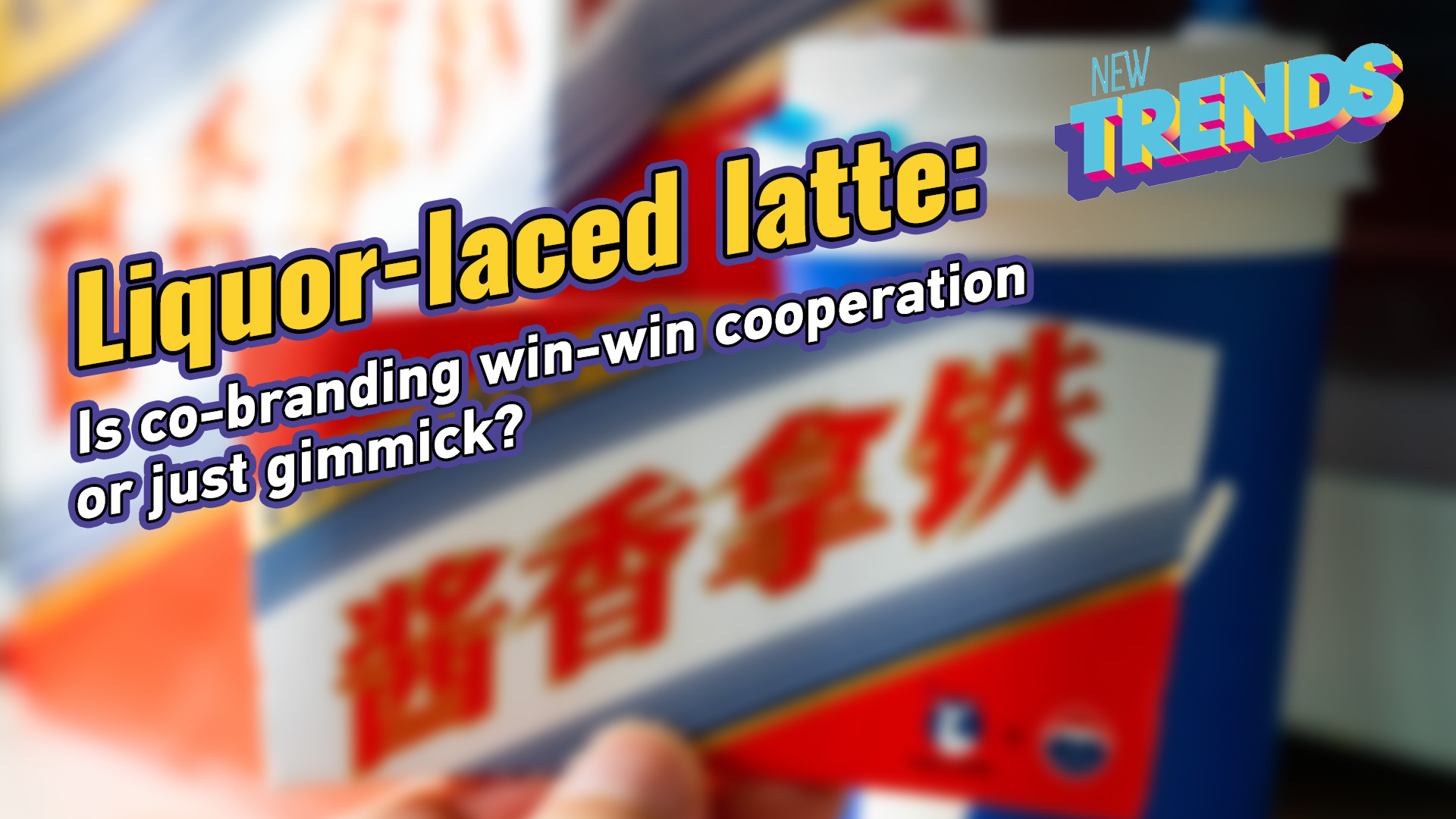Only one day after its launch, a "sauce-flavored" latte has received widespread attention and created heated discussion on social media.
Last week, China's domestic coffee brand Luckin launched the "sauce-flavored" latte laced with alcohol claimed to be from the high-end liquor brand Kweichow Moutai.
According to Luckin, 5.42 million cups of the drink were sold on the first day of its launch, with the sales of the single product topping 100 million yuan (about $13.9 million), setting a new sales record for the coffee chain.
At numerous outlets, the latte drink was in such high demand that it sold out within hours over the past several days. This unexpected, yet reasonable co-branding has allowed Luckin and Moutai to draw massive attention, creating a craze for coffee lovers to share pictures on social media.
In recent years, co-branding strategy has become one of the most popular marketing methods. A successful co-branding can not only attract followers of both brands, increase the brand value, but also create greater commercial value and increase sales and profits.
However, is co-branding truly a win-win cooperation or just a gimmick trying to get attention?
03:30

Creating 'trending topics'
The collaboration between Moutai and Luckin has attracted a number of young consumers. On China's social media platform Weibo, words such as "sauce-flavored latte" and "Moutai plus Luckin" swept across trending topics.
"Young people's first cup of Moutai and elderly people's first cup of latte," a netizen wrote on social media, adding that Moutai is beyond the purse of most people in China.
As China's liquor giant, Moutai's main consumer group is mainly those with relatively strong spending power, and the target audience of Luckin is mainly young people and urban white-collars.
"Through cooperation, the two brands can get closer to the consumers, and expand its respective consumer bases," a customer told CGTN.
Moreover, a trendy Chinese tea chain store recently collaborated with an Italian luxury fashion brand to launch a time-limited co-branded drink at 19 yuan per cup. According to a trending topic in May, some people have even been able to sell a used cup at 10 yuan online.
Industries such as ice cream, coffee and chocolate have become "testing fields" for brand innovation in recent years. For instance, Moutai has just announced its collaboration with chocolate brand Dove to launch liquor-filled chocolate.
Through cross-border co-branding, different brands engage in cultural exchanges, integrating the characteristics and styles of both sides and creating more distinctive and meaningful products.
Amid the popularization of symbols, different types of consumers have reached a consensus concerning what these symbols mean, and the direct impact is that most people tend to conform to the latest trends to manifest their status and taste.
"For us consumers, posting photos of these products on social media is a fulfilling moment and a good way to bond with friends," a consumer, who works as an advertising planner, told CGTN.
"I think it's all about chasing trends. If there is something new or interesting, I will give it a try," said another consumer.
"This kind of co-branding adds excitement and freshness into our daily life and Gen Z are more likely to be attracted to this," Doris Ke, founder&CEO of Digipont, told CGTN.
04:01

Win-win cooperation or gimmick?
With growing business competition and market potentials, brands need to constantly innovate and make breakthroughs, catering to consumers' diverse and personalized needs and differentiating themselves for new growth points, thus increasing exposure and strengthening, or even expanding, their brand awareness.
Co-branding is not something new. Globally, cases of co-branding are also common between high-end brands and fast-moving consumer goods brands in order to inject fresh energy into the brands.
"For prestigious brands like Moutai, they want to expand their influence among young consumers through more social buzz," Doris said, adding that this kind of collaboration can generate activation and desirability to new customers.
By cooperating with high-end brands, accessible brands demonstrated their willingness to promote and support integrating culture, thus upgrading their reputation to some extent. It also attracted the attention of a large number of consumers with its originality and uniqueness.
The luxury brand also needs to enhance and explore the market, approaching more consumers, mainly targeting young people. A smart way is gaining favor in their daily life and increasing brand loyalty.
"All co-branding aims to achieve win-win cooperation. Brands need to find ways to use new products to stimulate new and old customers," Nelson Niu, owner of COCKTAIL&COFFEE in Beijing, told CGTN.
The focus of co-branding is to stimulate consumption, thus increasing the values of the brands, Nelson, also a barista, said.
Cross-border brand marketing not only strengthens the brand story, design and life philosophy, but also emphasizes the cross-border collaborative creativity between the brand and people, exploring new concepts, thinking and patterns for communication, said Yang Qingxin, a professor at Capital University of Economics and Business.
Co-branding allows brands to create more possibilities in the future to have more contact with young customers, said Doris.
However, not all cross-border co-branding can be called successful. Some co-branded products received criticism among customers and on the internet, who said "the quality doe not match the reputation of the brand."
"Personally I don't buy it. This kind of mixing does not guarantee quality. I think the quality of a product is what I mostly focus on," said a customer.
No matter how competitive the market is, the popularity of cross-border collaborations ought to be supported by reputation and quality.
Co-branding can bring a certain degree of exposure to brands and products in a short term, but no matter which form is used to reach and adapt to consumers, the best marketing is to improve the quality and service of products, a netizen wrote on social media.